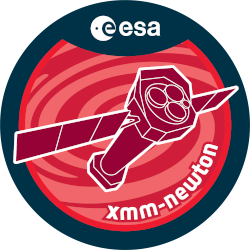

| Proposal ID | 060607 |
| Title | A deep look at accretion disks: Fe lines, kHz QPOs and spectral states. |
| Download Data Associated to the proposal | https://nxsa.esac.esa.int/nxsa-sl/servlet/data-action-aio?obsno=0606070101 |
| DOI | https://doi.org/10.5270/esa-prj8otg |
| Principal Investigator, PI | Dr DIEGO ALTAMIRANO |
| Abstract | Iron lines have now been detected in about half a dozen neutron-star accretingX-ray binaries. These lines can be used to set tight constrains on the accretiondisk geometry and on the radius of the neutron star. We have recently shown thatsimultaneous XMM-Newton/RXTE and Chandra/RXTE observations appear to contradictprevious works. Here we propose to observe a NS with XMM-Newton seven times for25~ks, simultaneously with some of those RXTE observations. Our program willsample a wide range of inner disk radii. This program requires both XMM-Newtonand RXTE observations. Since 2009 may be the last year of operations of RXTE,this program can only be done now. |
| Publications |
|
| Instrument | EPN, OM, RGS1, RGS2 |
| Temporal Coverage | 2009-03-14T14:50:30Z/2009-09-11T16:01:56Z |
| Version | 17.56_20190403_1200 |
| Mission Description | The European Space Agencys (ESA) X-ray Multi-Mirror Mission (XMM-Newton) was launched by an Ariane 504 on December 10th 1999. XMM-Newton is ESAs second cornerstone of the Horizon 2000 Science Programme. It carries 3 high throughput X-ray telescopes with an unprecedented effective area, and an optical monitor, the first flown on a X-ray observatory. The large collecting area and ability to make long uninterrupted exposures provide highly sensitive observations. Since Earths atmosphere blocks out all X-rays, only a telescope in space can detect and study celestial X-ray sources. The XMM-Newton mission is helping scientists to solve a number of cosmic mysteries, ranging from the enigmatic black holes to the origins of the Universe itself. Observing time on XMM-Newton is being made available to the scientific community, applying for observational periods on a competitive basis. |
| Creator Contact | https://www.cosmos.esa.int/web/xmm-newton/xmm-newton-helpdesk |
| Date Published | 2010-10-27T00:00:00Z |
| Last Update | 2025-08-04 |
| Keywords | "XMM", "set tight constrains", "wide range", "XMM-Newton", "neutron star", "fe lines", "accretion disk geometry", "accretion dis", "xmm newton", "khz qpos", ".. iron lines", "inner disk radii", "deep look" |
| Publisher And Registrant | European Space Agency |
| Credit Guidelines | European Space Agency, Dr DIEGO ALTAMIRANO, 2010, 'A deep look at accretion disks: Fe lines, kHz QPOs and spectral states.', 17.56_20190403_1200, European Space Agency, https://doi.org/10.5270/esa-prj8otg |